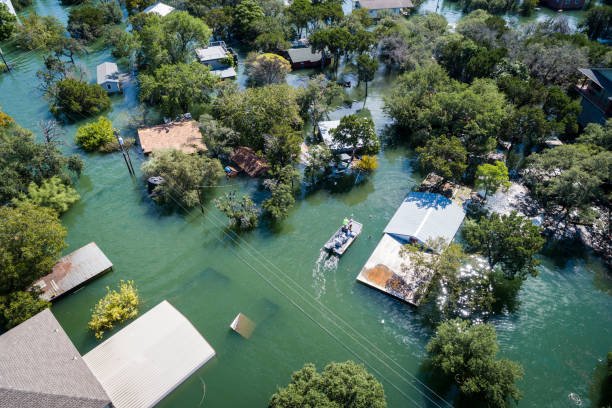Texas Flood 2025: The Texas Flood 2025 has made headlines worldwide due to its devastating effects on communities, infrastructure, and lives. As torrential rains battered several regions of the Lone Star State, flash floods submerged entire neighborhoods, displaced thousands, and caused billions in damages. This blog explores the causes, consequences, and response to this natural disaster in detail.

What Caused the Texas Flood 2025?
The primary cause of the Texas Flood 2025 was an unusually intense weather system that developed over the Gulf of Mexico. This system brought unprecedented rainfall to areas including Houston, Austin, Dallas, and San Antonio. Meteorologists classified the event as a “1-in-100-year flood” due to the sheer volume of rain that fell within a short span.
Several contributing factors include:
-
Climate Change: Warmer ocean temperatures have increased the frequency and intensity of tropical storms, resulting in more moisture-laden air over Texas.
-
Urbanization: Rapid development in Texas cities has led to the destruction of natural drainage systems. Impervious surfaces like concrete prevent water absorption, worsening flooding.
-
Inadequate Infrastructure: Outdated drainage systems and flood control mechanisms failed to handle the deluge, particularly in older neighborhoods.
Areas Most Affected by the Texas Flood:
The Texas Flood 2025 affected multiple cities and rural communities. Among the hardest hit were:
-
Houston: Already prone to flooding, Houston saw over 20 inches of rain in 48 hours. Major highways turned into rivers, and thousands had to be rescued by boat.
-
Dallas-Fort Worth Metroplex: Several counties experienced power outages and severe waterlogging.
-
Austin: Parts of the city witnessed landslides and flash floods, damaging property and displacing families.
-
San Antonio: The city saw mass evacuations and widespread damage to infrastructure and homes.
Humanitarian and Economic Impact:
The Texas Flood 2025 had a profound humanitarian and economic impact:
-
Loss of Lives and Injuries: As of July 5, 2025, at least 68 people have lost their lives, while hundreds have been injured or reported missing.
-
Displacement: Over 70,000 residents were evacuated from their homes, with many seeking shelter in schools, churches, and community centers.
-
Property Damage: Initial estimates suggest that property and infrastructure damage could exceed $15 billion.
-
Agricultural Losses: Farmlands in East and Central Texas were inundated, destroying crops and affecting food supply chains.

Emergency Response and Rescue Efforts:
State and federal agencies acted swiftly in response to the Texas Flood 2025. Here’s a breakdown of the emergency actions taken:
-
FEMA Activation: The Federal Emergency Management Agency (FEMA) has deployed rescue teams, set up temporary shelters, and provided food, water, and medical aid.
-
Texas National Guard: Over 3,000 troops were mobilized to assist with evacuations, road clearance, and supply distribution.
-
Community Involvement: Local volunteers and NGOs played a crucial role, using personal boats and vehicles to rescue stranded individuals.
-
Technology in Rescue: Drones and AI-based mapping systems helped identify flood hotspots, enabling faster and safer rescue operations.
Government and Policy Response:
The Texas government has announced a comprehensive relief package and called for an assessment of existing flood control infrastructure. Key actions include:
-
Allocation of emergency funds for rebuilding roads and bridges.
-
Introduction of a statewide flood insurance awareness campaign.
-
Acceleration of the Urban Drainage Modernization Plan, particularly in Houston and Dallas.
Lawmakers are also proposing new zoning regulations to limit construction in flood-prone areas and to promote green infrastructure solutions like rain gardens and permeable pavements.
Environmental and Long-term Effects:
Beyond immediate destruction, the Texas Flood 2025 has long-term environmental consequences:
-
Ecosystem Disruption: Floodwaters have damaged ecosystems in national parks and wildlife areas.
-
Water Contamination: Overflowing sewers and industrial runoff have polluted rivers and lakes, raising public health concerns.
-
Mental Health Crisis: The trauma of losing homes, livelihoods, and loved ones has led to an uptick in PTSD and depression cases, especially among children and the elderly.
Lessons from the Texas Flood 2025:
This disaster has once again highlighted the importance of climate preparedness and resilient infrastructure. Some key takeaways include:
-
Invest in Modern Drainage: Cities must prioritize stormwater management systems.
-
Community Awareness: People should be educated on flood risks and emergency preparedness.
-
Climate Action: Local and national governments must double down on climate adaptation and mitigation efforts.
The Texas Flood 2025 serves as a wake-up call to all levels of government and society. While rescue and recovery are ongoing, the real work lies ahead—building a Texas that is better equipped to face the challenges of a changing climate. As we support the victims and rebuild, we must also learn from this tragedy to prevent such disasters in the future.
ऐसे और भी एक्सप्लेनर लेखों के लिए हमारे साथ जुड़े रहें! Khabari bandhu पर पढ़ें देश-दुनिया की ताज़ा ख़बरें — बिज़नेस, एजुकेशन, मनोरंजन, धर्म, क्रिकेट, राशिफल और भी बहुत कुछ।
Massive Japan Volcano Eruption 2025: Cause, Impact, and Why It’s Making Headlines Worldwide

